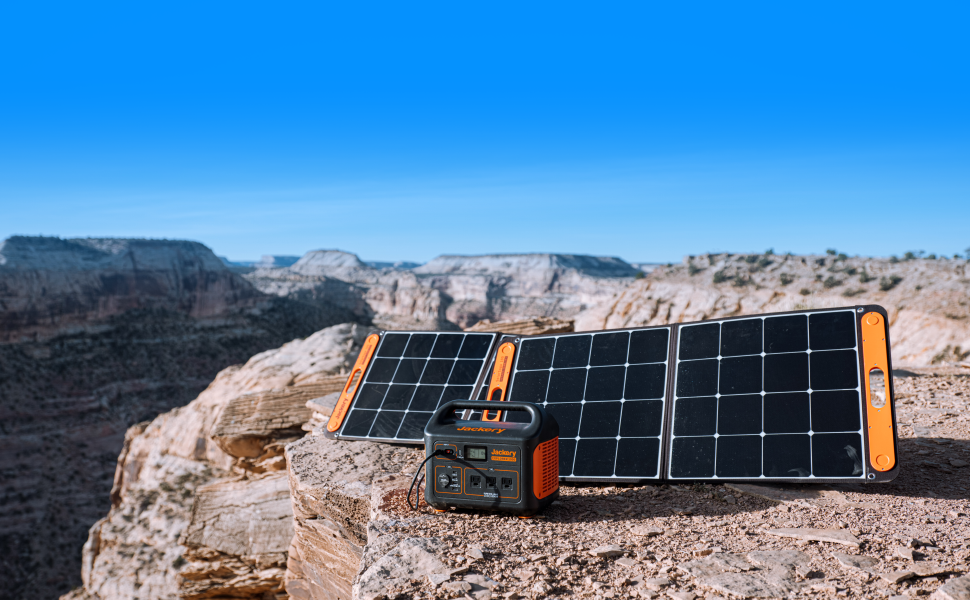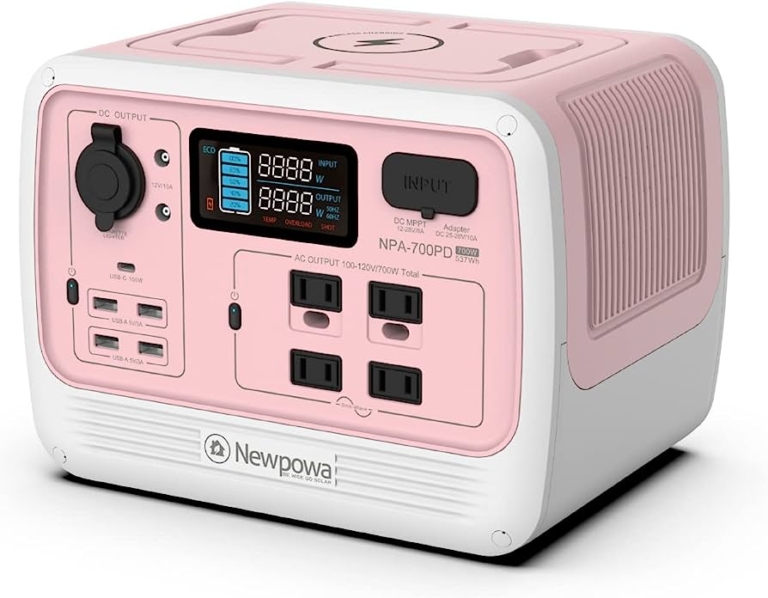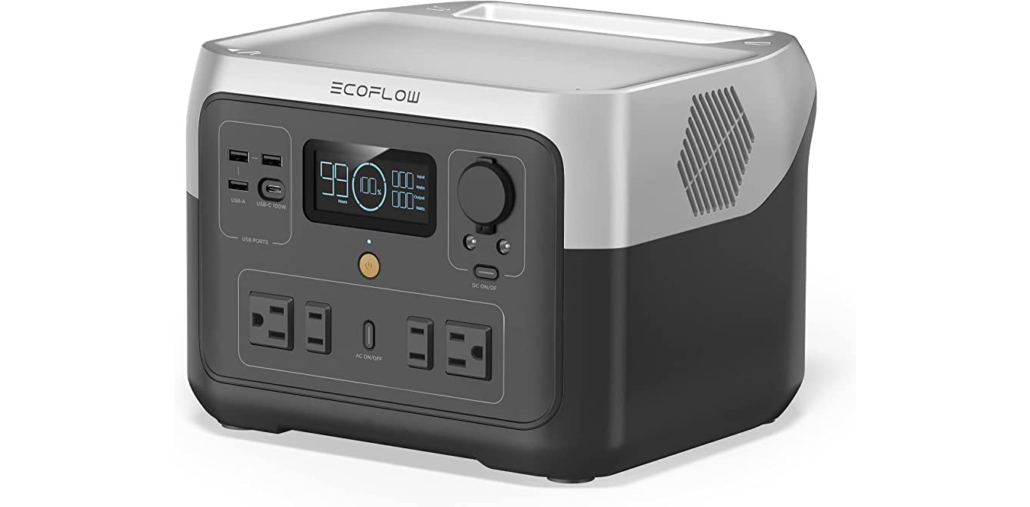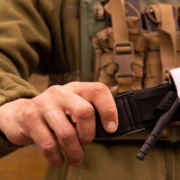Introduction To Portable Power Stations
Portable power stations are portable devices that can store and convert electrical energy, making them ideal for use while traveling or in remote locations. These stations can come in various sizes, from small devices that can charge a phone or laptop to larger systems that can power small appliances.
They typically rely on rechargeable lithium-ion batteries that can be charged through an AC wall outlet, carport, or solar panels. Some portable power stations are also designed to function as generators, storing energy from sources such as solar panels or wind turbines and then converting that energy into usable power.
Portable power stations are becoming more popular as people seek to reduce their reliance on the electrical grid and increase their independence. They also offer a convenient, reliable, and environmentally friendly way to power devices and appliances while traveling or in remote areas.

What Should Be Consider When Buying A Portable Power Station
A portable power station is a device that can provide electrical power when you’re away from a power source. When purchasing a portable power station, one should look first for its battery capacity and power output. The battery capacity determines how often and how long you can use your devices before the power station needs to be recharged. The power output determines how many devices and what type of devices you can power.
Next, you should consider the power station’s number and type of ports (USB, AC, DC) and whether they are compatible with your devices. Additionally, one should consider the weight and size of the power station, as well as its durability and ease of use.
Finally, one should consider the charging time of the power station and the types of charging methods available (solar, AC, DC). By keeping these features in mind, you can find a portable power station that meets your specific needs and requirements.
Battery Capacity And Power Output
The battery capacity of a portable power station is a crucial feature that determines how long it can power your devices. The battery capacity is typically measured in watt-hours (Wh).
A higher watt-hour rating means the battery can hold more energy and provide power for a longer time. Portable power stations generally range from 150Wh to 1000Wh capacity, depending on the intended usage and the price range.
For example, a 300Wh power station can charge a smartphone for up to 20 times, a laptop for up to 5 times, or power a mini-fridge for up to 6 hours. Meanwhile, a 1000Wh model has enough capacity to run a standard refrigerator for a day or keep a power tool running on a construction site.
When choosing a portable power station, it is essential to consider your planned usage and the battery capacity required.
Type Of Ports
Portable power stations typically come equipped with various types of ports to accommodate different types of devices and appliances. These ports can include USB ports for charging mobile phones or tablets, AC outlets for powering small appliances or laptops, and DC ports for running devices that require a direct power source, such as car refrigerators or air compressors.
Some models also offer USB-C ports or wireless charging capabilities. Additionally, many portable power stations have built-in surge protection to safeguard devices against potential electrical damage. When selecting a portable power station, it is important to consider the types and number of ports needed for your intended use, as well as the capacity and charging time of the unit itself.

Weight And Size
Portable power stations come in a variety of sizes and weights, depending on their capacity and intended use. Generally, they are designed to be easily transportable, so they tend to weigh between 5 and 50 lbs. Some smaller models may weigh as little as 3 lbs, making them ideal for hiking or camping trips. Larger models may be closer to 100 lbs or more and are better suited for RV or home use.
Lithium-ion batteries are commonly used in portable power stations because they are lightweight and offer high energy density. When choosing a portable power station, it’s important to consider how much weight you’re willing to carry, as well as the device’s capacity and features. The weight of the power station can also affect its portability and ease of use.
Durability
Portable power stations are designed to offer a reliable and convenient power source for outdoor activities, emergencies, and other situations where grid power is unavailable. One of the important considerations when choosing a portable power station is its durability.
Portable power stations are typically built with durable materials such as metal or rugged plastic to ensure they can withstand regular use and outdoor conditions. They also feature reinforced edges and corners to protect against accidental drops or impacts.
Additionally, many portable power stations are equipped with safeguards such as overvoltage protection, short-circuit protection, and overcurrent protection that help prevent damaging electrical surges. These features help ensure the longevity of the device and protect against potential malfunctions that could cause damage or injury.
Overall, investing in a high-quality portable power station with a sturdy build and safety features can ensure that you have a reliable power source for years to come.
Charging The Portable Power Station
A portable power station is a convenient way to keep your devices charged when you’re on the go. There are several ways to charge your power station. The first and most common way is to plug it into a wall outlet using the included AC adapter. This allows you to fully charge the power station in a few hours, depending on the capacity of the battery.
Another way to charge your power station is to plug it into a 12V DC outlet in your car. This is a great option for camping trips or road trips when you may not have access to a wall outlet.
Finally, many portable power stations also have the option of using solar panels to recharge the battery. This is a great option for outdoor enthusiasts or people who want to reduce their carbon footprint. Solar panels can be connected to the power station using the included charging cable, and can fully recharge the battery in a few hours if conditions are optimal.
Using Solar Panels
To use solar panels for portable power stations, you need to follow these steps:
1. Choose the right portable power station that can handle the wattage of your solar panel. Look for products that feature built-in solar charging, like Goal Zero or Jackery.
2. Buy a solar panel that’s compatible with your power station. It should be efficient, durable, and portable. Look for the maximum power point tracking (MPPT) charge controller as these are the most efficient.
3. Connect the solar panel to the power station. This can be done through either an Anderson Powerpole or MC4 cable. Ensure that you have the correct cable for your specific power station.
4. Place the solar panel in an optimal location. It should be placed in direct sunlight and at an angle that maximizes its exposure to the sun.
5. Check the charging progress of your portable power station regularly. When it’s fully charged, you can use it to power your devices anytime, anywhere.
Safety Features
Portable power stations are a great option for outdoor enthusiasts, emergency preparedness, and remote job sites. However, it is important to take safety features into consideration when choosing a portable power station. Some important safety features to look for include:
1. Overcharge protection: This feature prevents the battery from being overcharged, which can lead to a fire or explosion.
2. Short circuit protection: This feature protects the power station from damage if there is a short circuit in the system.
3. Over-discharge protection: This feature prevents the battery from being discharged too low, which can damage the battery and reduce its lifespan.
4. Overload protection: This feature prevents the power station from being overloaded, which can damage the device or cause a fire.
5. Temperature control: This feature monitors the temperature of the battery and shuts off the charging process if it gets too hot.
By choosing a portable power station with these safety features, you can ensure that you have a reliable and safe power source for your outdoor adventures or emergency situations.
It's Time To Get Yours
Overall, portable power stations are an excellent investment for those who need access to reliable power when on the move. They are environmentally friendly, cost-effective, and provide peace of mind in emergency situations.























Leave a Reply
Want to join the discussion?Feel free to contribute!